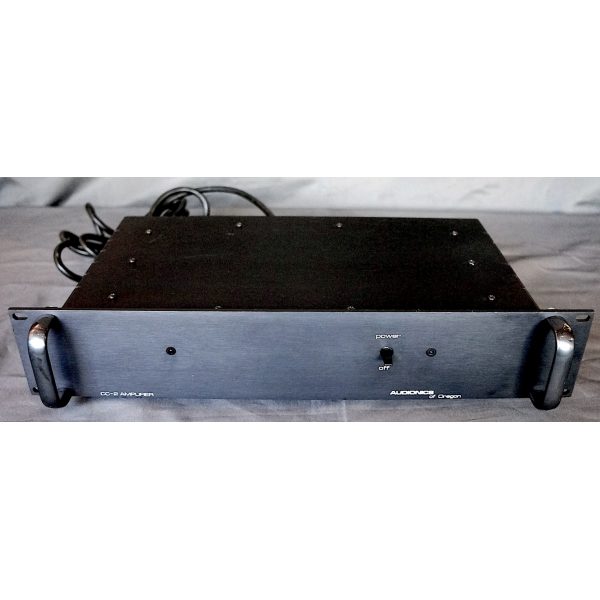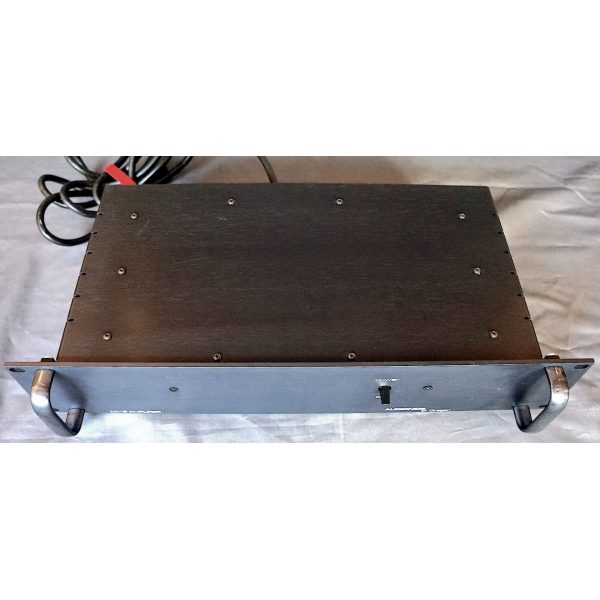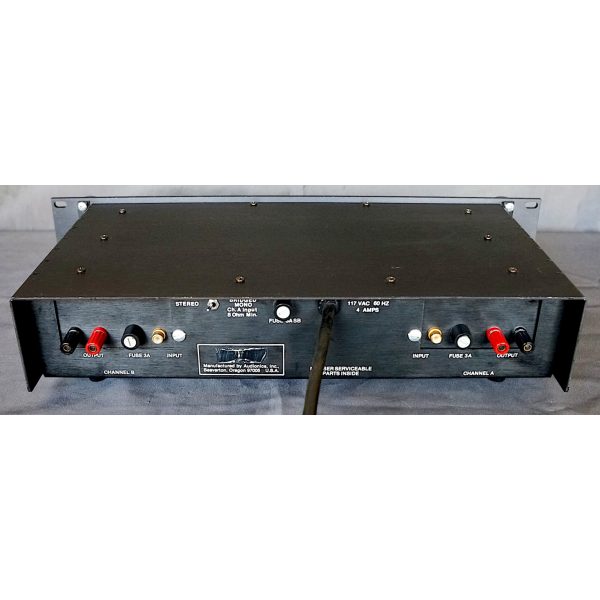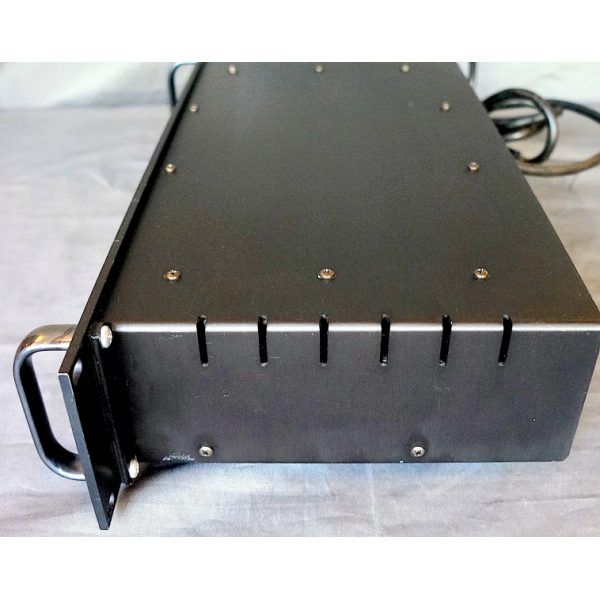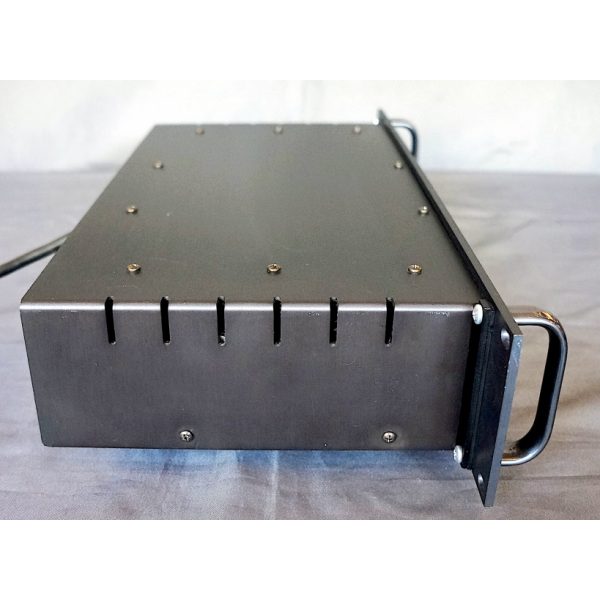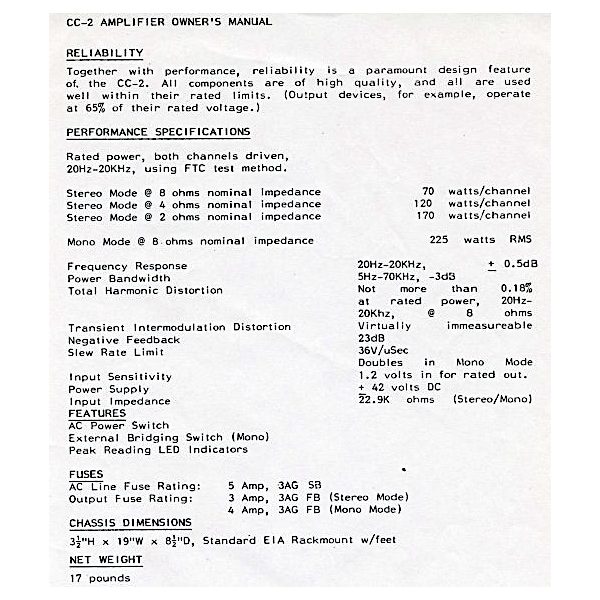Audionics of Oregon CC-2
Vintage Stereo/Mono Power Amp
All pre-owned product is tested in our service department and have been passed for sale... and comes with a 90 day warranty! Tested to spec performance.
In good condition. See pix for details on cosmetics. Unit is actually black.
Original box and packing are NOT included, but we will pack carefully. Full specs are last image.
Small handbuilt amp company from Portland, OR with a great following - even after all these years.
From AudioKarma.org: Introduced in 1978. Highly reviewed. The CC-2 is capable of 70-watts per channel into 8-ohms. The amp can nearly "double-down" outputting 120WPC @ 4-ohms and 170WPC @2-ohms. Bridged to mono, it can output >200-watts @ 8-ohms. It is a very dynamic amplifier that provides a sense of immediacy that few others can. Although not a DC design (there is an input coupling cap), it suffers no restriction of the low-end, nor is there any softness to the high-end.
Physically, the amp is quite compact. While maintaining a pro-standard 19-inch width (complete with rack-mount holes and handles), it's only 2-rack units tall, and less than 8-inches deep. It's dimensions belie its mass, though, as a good amount of the internal volume is taken up by a very large split-core power transformer (~600-650VA by quick calculation). Power is rectified by a large, quasi-heat sinked full-wave bridge rectifier, and smoothed by a pair of 15,000uFd caps.
There are no large heat sinks, as the whole chassis and covers act as the heat sink - (its unusual in that the case was used as a heatsink for the output transistors. The inside of the top cover was properly silicone greased.) being moderately powered, and not biased highly into class A, it doesn't need large heat sinks. To either side of the power supply are the amplifier boards themselves. Output devices are (now) unobtainable Motorola 2N5630 and 2N6030 (one pair each per channel). Bias test points, as well as bias and DC offset adjustments are conveniently located near the output transistors.
One nod to the audiophile community of the time is the then uncommon gold-plated input jacks. And like many many purest amps, there is no turn-on delay or output relay; protection is provided by a 3-amp fuse and nothing else.
From the AVS Forum:
Keep in mind that this amp will run very hot in the bridged mode, and will put out around 200 watts into eight ohms. It will run a 4 ohm load bridged. The actual case of the amp is the heat sink, so give that thing lots of breathing room. You may blow rail fuses, and you can safely replace the 3 amp fuses with 5 amp fast blow fuses. The clipping indicators light very early, so don't panic if they are lit 10%-20% of the time at high volume.
Read more about the history and technology HERE

